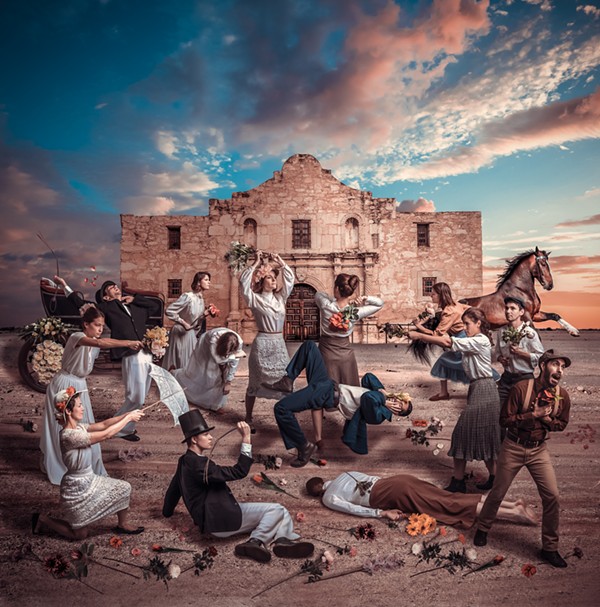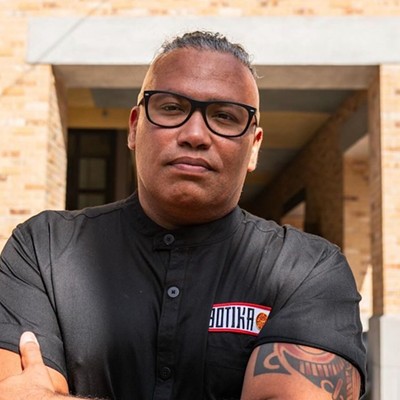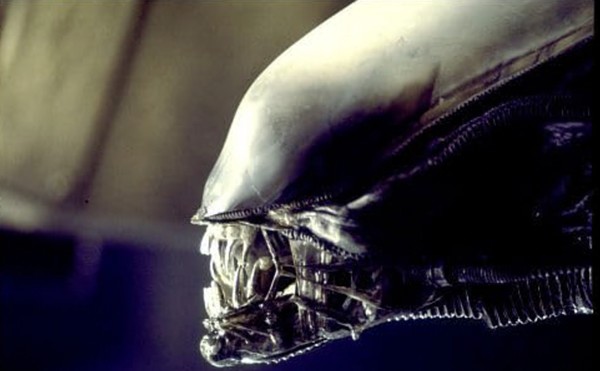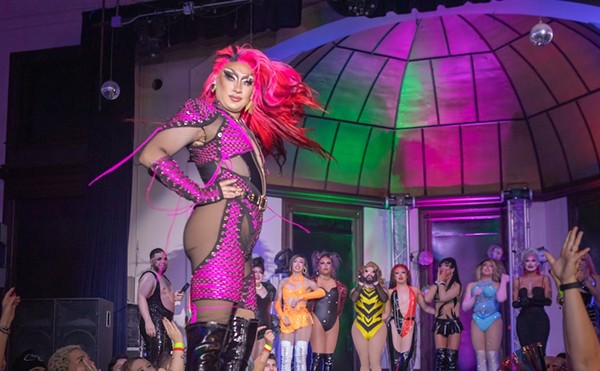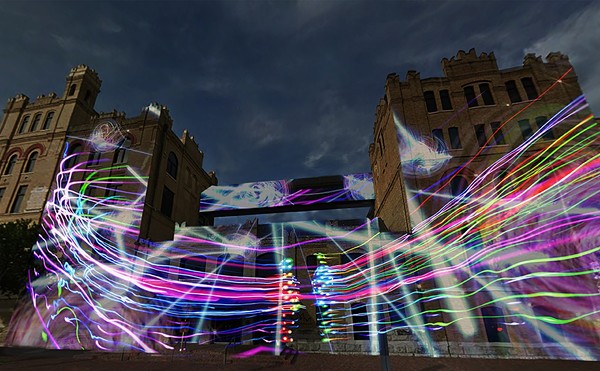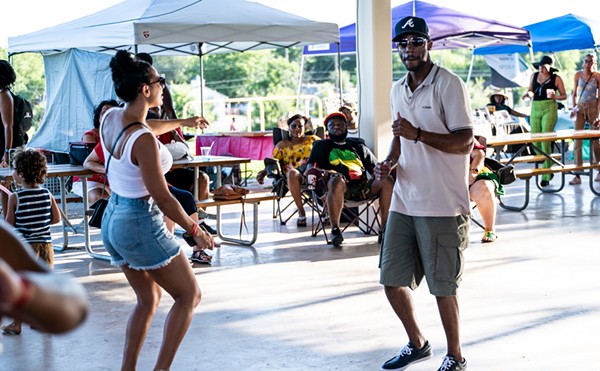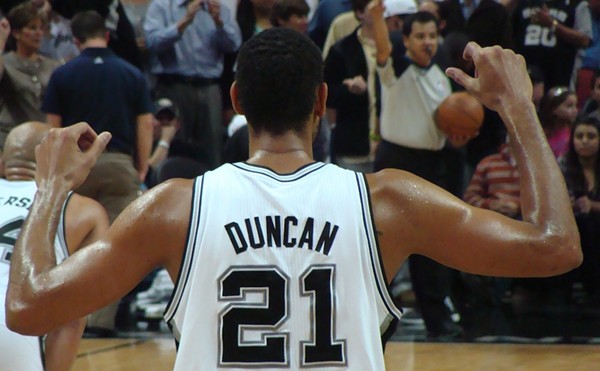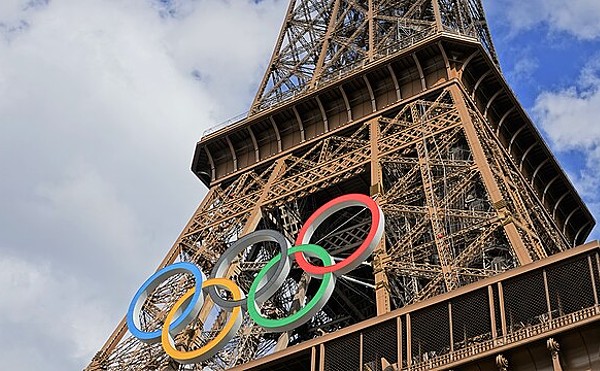Who invited you to create work for “Common Currents”?
Mark Walley: We were invited to participate in “Common Currents” by peer artist Karl Frey, who has been a friend and mentor of ours since taking his art course in college. We were also invited by peer artist Jennifer Ling Datchuk, who is a frequent video collaborator of ours.
When you received 1891 as your assigned year, did you immediately know your piece would be about the Battle of Flowers Parade?
Angela Walley: We immediately did an online search and were so excited to discover Fiesta San Antonio started in 1891 with the first Battle of Flowers Parade. We were very fortunate to receive such a significant year in San Antonio’s history, but also felt pressure to create a work of art that lived up to that history.
Did you learn anything unusual about the origins of the Battle of Flowers?
MW: The majority of the literature you’ll find will discuss how Fiesta began as a parade of decorated horse-drawn carriages to honor fallen soldiers of the Alamo and the Battle of San Jacinto. The story typically ends with something like, “The first Battle of Flowers Parade in 1891 was considered a great success that quickly became a city institution.” But I discovered a newspaper article from 1891 published in the San Antonio Daily Light that describes a chaotic display of social disorderliness which unfolded after the parade entered Alamo Plaza. The procession was meant to end with a mock flower battle where participants could pelt each other — as well as bystanders — with flowers. The article describes a fight that waged for nearly an hour between the elite parade participants and the massive crowd of 15,000. Flowers were torn from carriages; a buggy was overturned and horses ran loose into the crowd; a fist fight broke out, leading to the arrest of two men; and carriage whips and umbrellas were used for defense on the crowd. The article so vividly described the scene that we were inspired to visually tell that story.
Did your piece take any stylistic cues from Robert Jenkins Onderdonk’s 1903 painting Fall of the Alamo?
MW: We knew we wanted to work in photography as our medium and create an image that portrayed the “social disorderliness” side of the story, but we needed another component to tie it together. We wanted to make a connection to the Alamo as both the site of the famous battle and also the location of the first Battle of Flowers Parade, so we researched imagery that had been created about the Battle of the Alamo. When we saw Onderdonk’s iconic painting, we knew it would be an incredible image to recreate. The dynamics between the Texian defenders and the Mexican army perfectly aligned with the elite-versus-the-crowd story we wanted to tell. We replaced the weapons with flowers and recast Davy Crockett as Ellen Maury Slayden, [one of the organizers of the first] Battle of Flowers Parade.
Since most folks know you as filmmakers, what can you share about working in still photography and the challenges of staging a shot this complex?
AW: We recently completed our debut feature-length documentary film, Tia Chuck: A Portrait of Chuck Ramirez, and a very significant component to making that film was staging recreations that represent significant moments in Chuck’s life. So cinematic recreations have been on our mind, but we’d never pulled off anything with this many characters for video. Compositing photographs gave us the opportunity to create a much more dynamic image than would have been possible in video.
“Common Currents” remains on view by appointment at the Guadalupe Cultural Arts Center’s Progreso Building through April 29; 1300 Guadalupe St., (210) 271-3151, guadalupeculturalarts.org.

